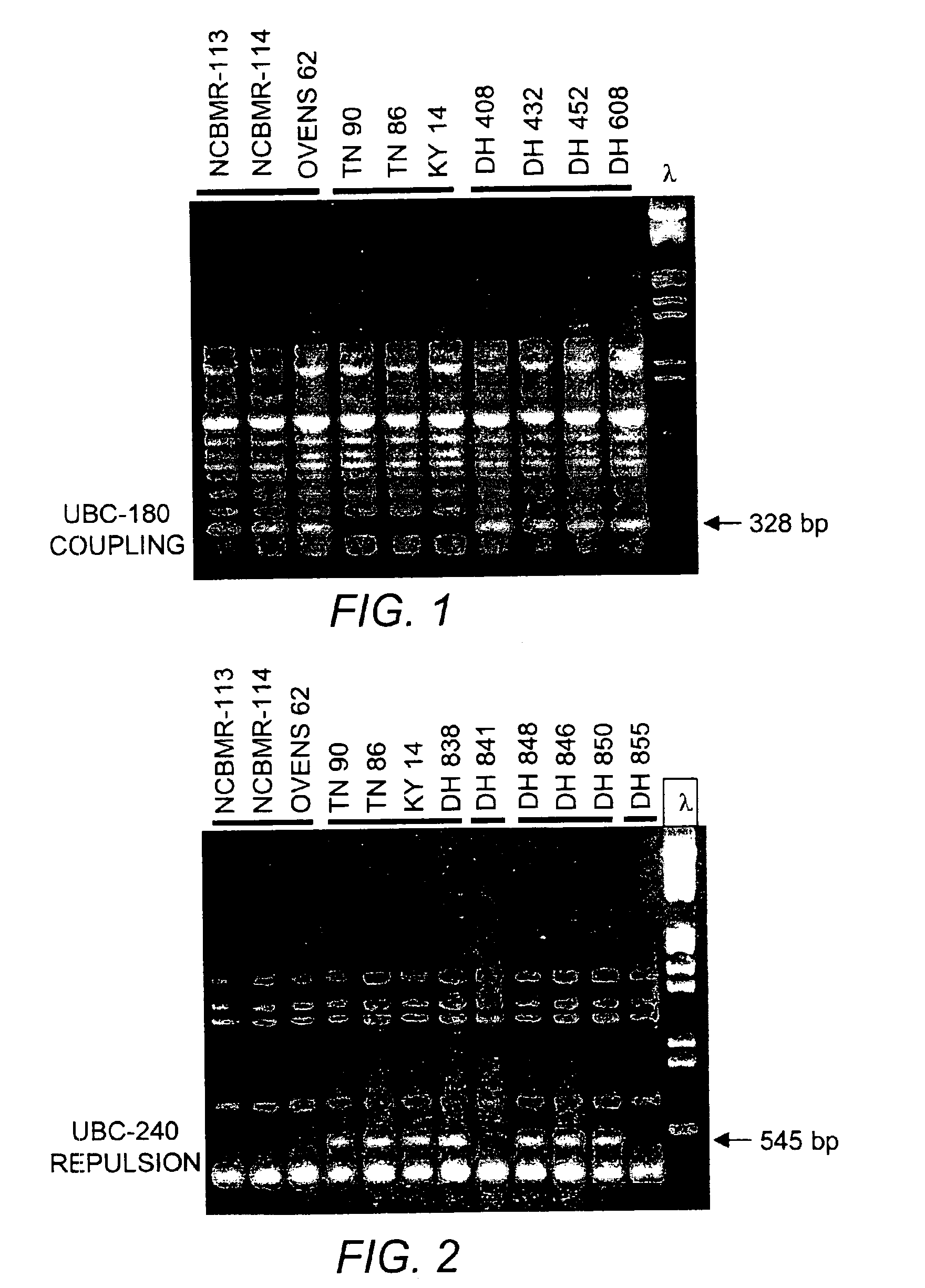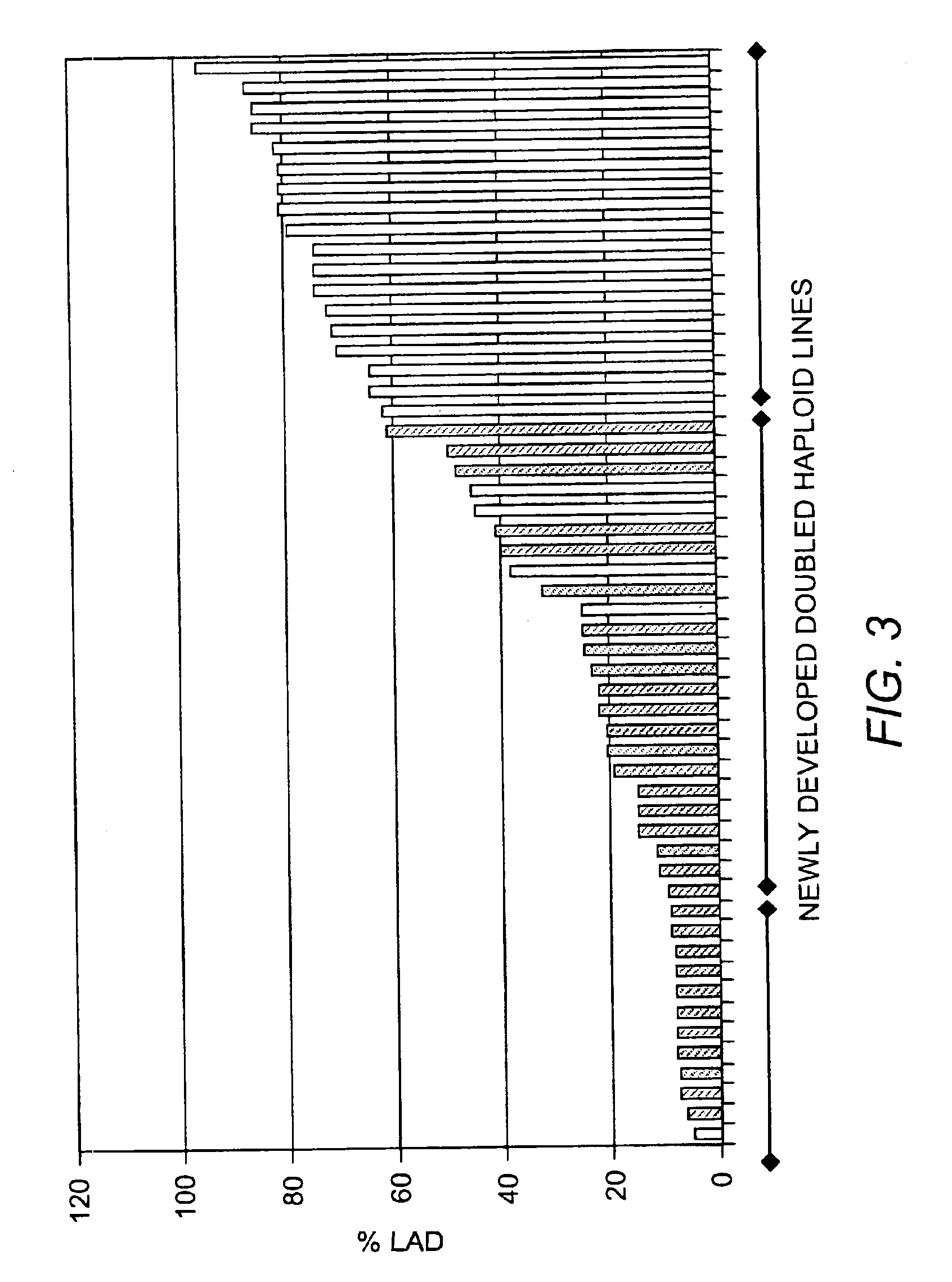Tobacco cultivar NC 2000
a tobacco cultivar and tobacco technology, applied in the field of new tobacco cultivars, can solve the problems of complex inheritance, incomplete destruction of transplants in the bed, and inability to adapt to the environment,
- Summary
- Abstract
- Description
- Claims
- Application Information
AI Technical Summary
Problems solved by technology
Method used
Image
Examples
example 1
[0171]To the inventor's knowledge, NC 2000 is most similar to one of its parents, KY 14; however, NC 2000 is highly resistant to blue mold caused by the fungal pathogen Peronospora tabacina Adam (see Table 3), whereas KY 14 is susceptible.
[0172]The NC BMR-113 parent also exhibits resistance to blue mold. However, NC 2000 is a cultivar, whereas NC BMR-113 is a germplasm line that is not adapted or suitable for commercial cultivation.
Blue Mold Resistance:
[0173]Field evaluations of blue mold resistance in NC 2000 and check cultivars were conducted at the Mountain Research Station in Waynesville, N.C. and at the Upper Mountain Research Station in Laurel Springs, N.C. in years 1995-1998. NC 2000 was entered into the Regional Burley Variety Evaluation Test in 1998. In addition to evaluations conducted in the burley growing belt, evaluations for blue mold reaction were also performed under natural epidemics in Papantla, Veracruz, Mexico.
[0174]Blue mold resistance in NC 2000 is manifested b...
example 2
Materials and Method
Identification of Markers Linked to the BMR Locus
[0184]Traditional breeding methods are difficult to use when breeding for blue mold resistance. Having to wait for natural epidemics to occur increases the interval between cycles of selection. The interaction between host and pathogen is extremely complex which causes disease reactions to be highly variable, unpredictable, and often non-reproducible. The use of molecular markers could reduce the amount of time and effort required to identify resistance in burley tobacco.
Population Development.
[0185]Two burley breeding lines released from the North Carolina Agricultural Research Service in 1992, NCBMR-113 and NCBMR-114, were used as the maternal parents and crossed with TN 90. Maternally derived doubled haploid lines were obtained through the N. africana method and chromosome doubled using the leaf midvein technique.
Laboratory Screening.
[0186]Fifty newly developed doubled haploid (DH) lines were screened for blue m...
example 3
Results of Marker Analysis
[0190]Forty primers detected polymorphic bands between the susceptible and resistant bulks, but only 21 produced bands that were linked to the gene conditioning resistance to blue mold (BMR) after individual DNA amplification of the lines comprising the bulks (Table 5). Six of these primers (UBC-149, UBC-180, UBC-534, UBC-544, UBC-610, UBC-240) were selected due to their repeatability and ease of scoring to use in pre-screening (FIGS. 1 and 2).
[0191]Out of the fifty newly classified DH lines, twenty-nine were classified as resistant when they were pre-screened using molecular markers. Of these twenty-nine, only fifteen had % LAD of 10% of less warranting a resistant classification in the field evaluations. Twenty-one out of the fifty DH lines were classified as susceptible using the markers. Of these twenty-nine lines, twenty were classified as susceptible in the field (FIG. 3). It is proposed that this one line that was not in agreement is a recombinant. I...
PUM
| Property | Measurement | Unit |
|---|---|---|
| diameter | aaaaa | aaaaa |
| pH | aaaaa | aaaaa |
| morphological characteristics | aaaaa | aaaaa |
Abstract
Description
Claims
Application Information
 Login to View More
Login to View More - R&D
- Intellectual Property
- Life Sciences
- Materials
- Tech Scout
- Unparalleled Data Quality
- Higher Quality Content
- 60% Fewer Hallucinations
Browse by: Latest US Patents, China's latest patents, Technical Efficacy Thesaurus, Application Domain, Technology Topic, Popular Technical Reports.
© 2025 PatSnap. All rights reserved.Legal|Privacy policy|Modern Slavery Act Transparency Statement|Sitemap|About US| Contact US: help@patsnap.com


